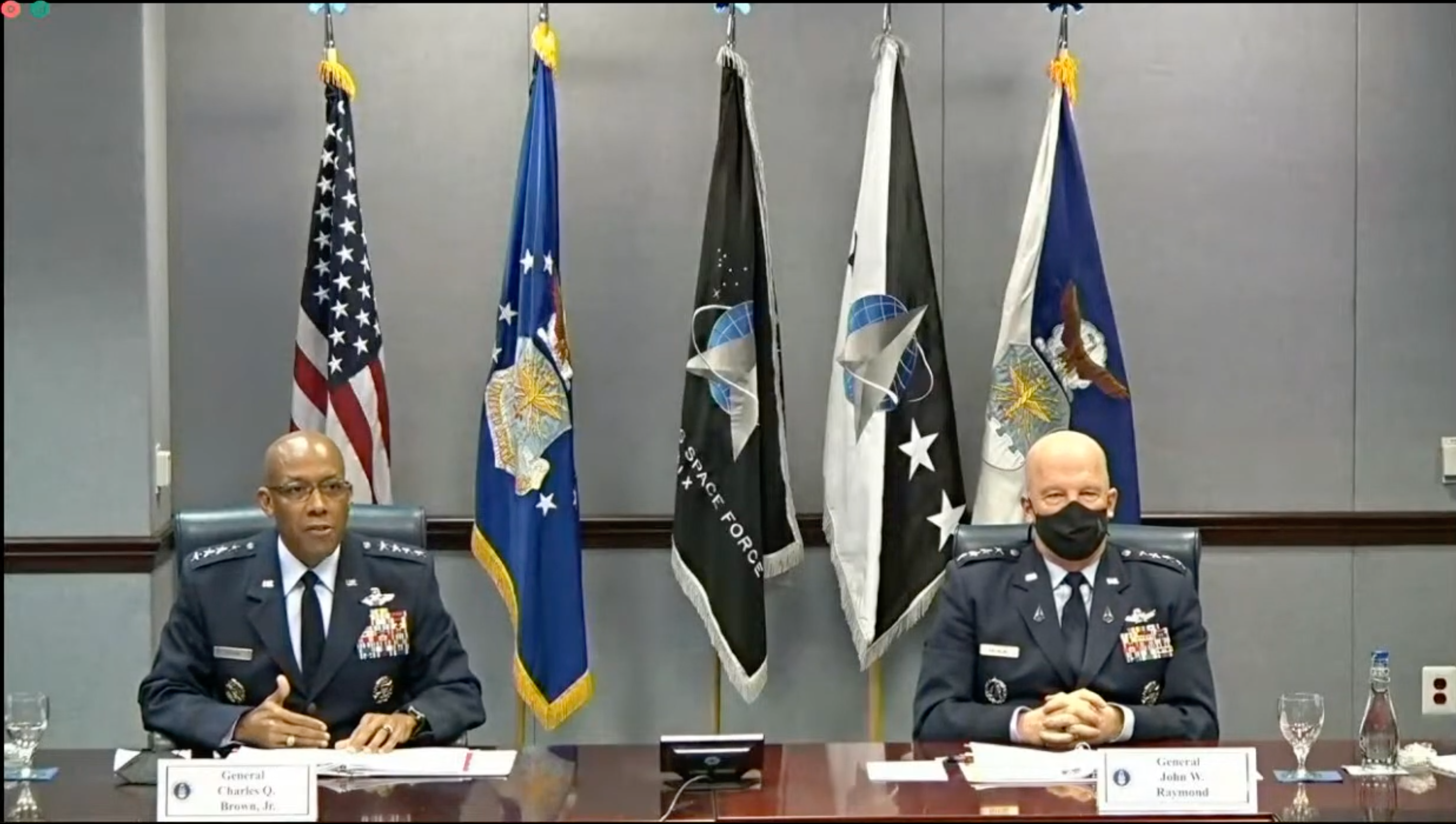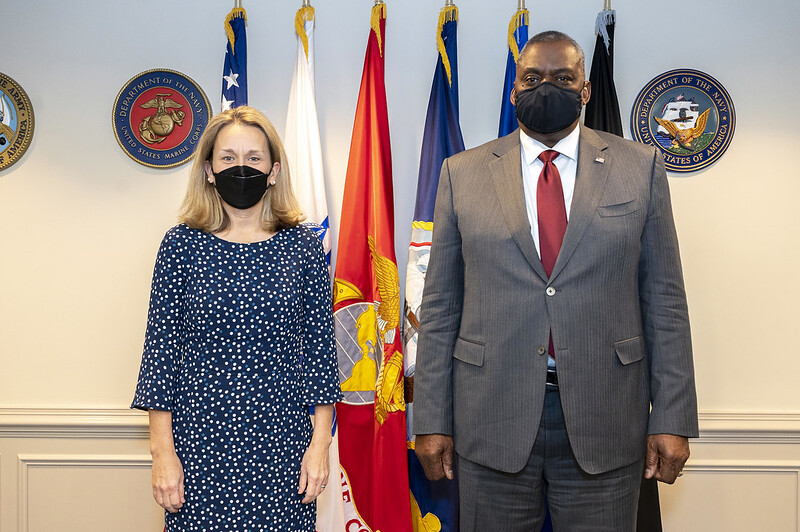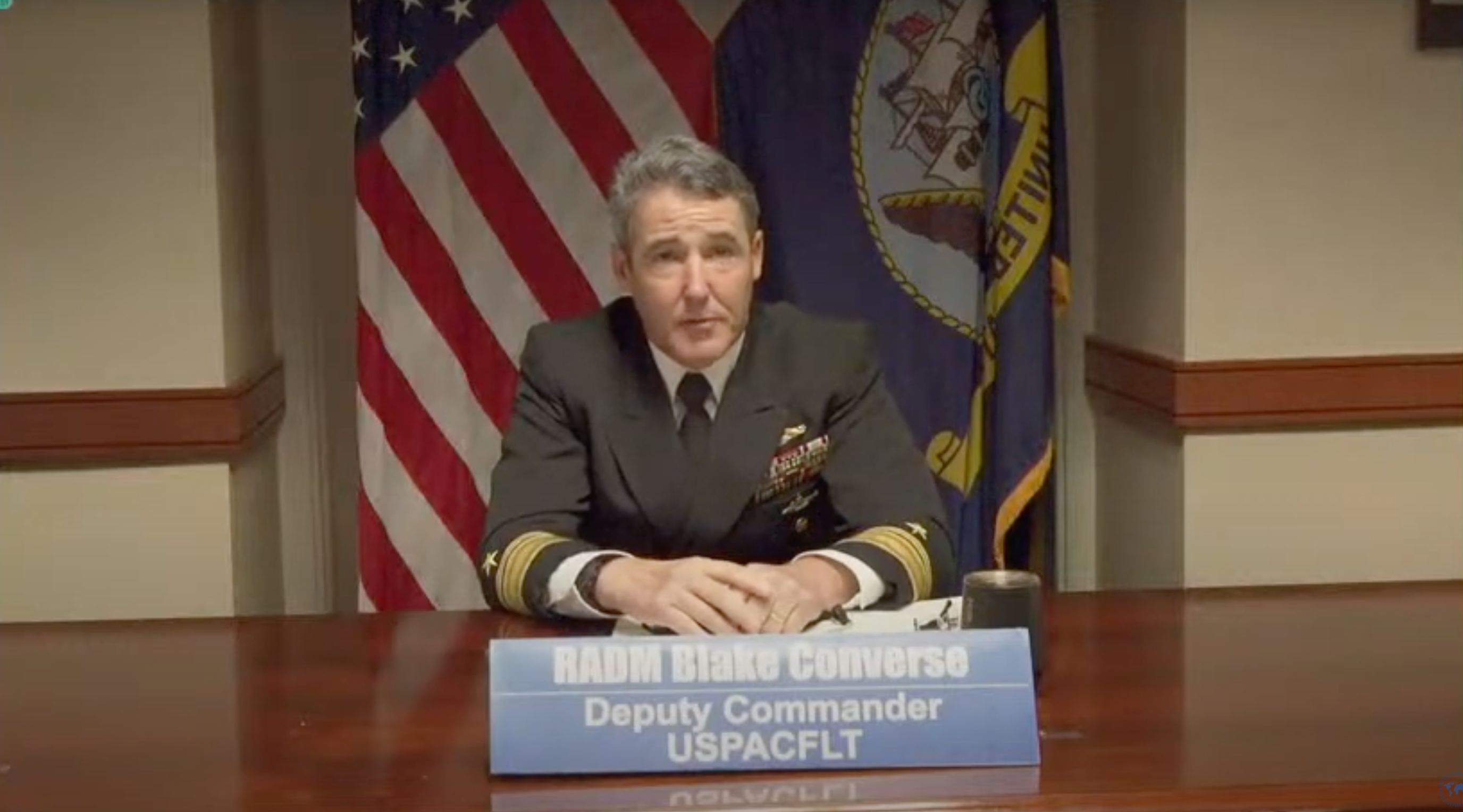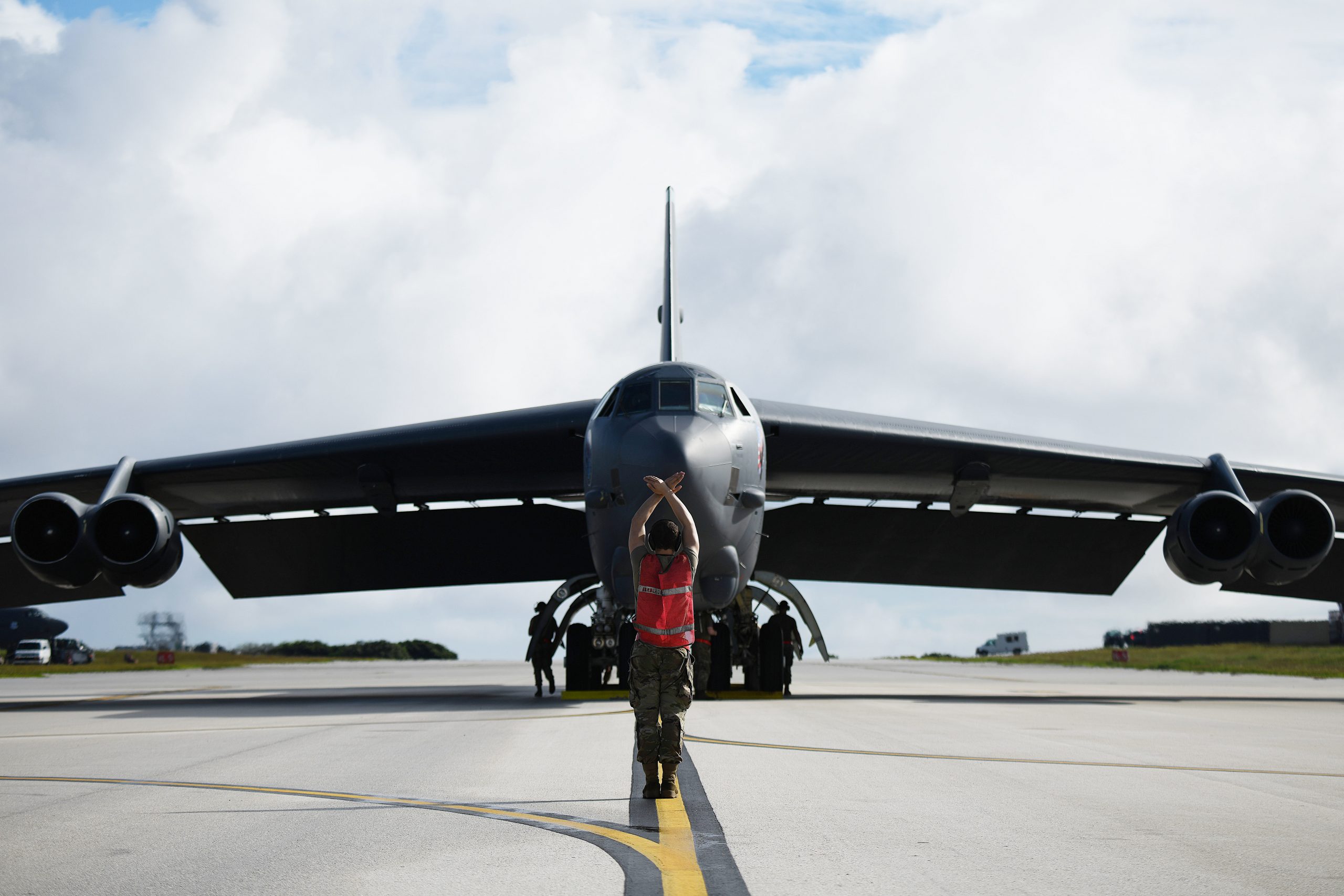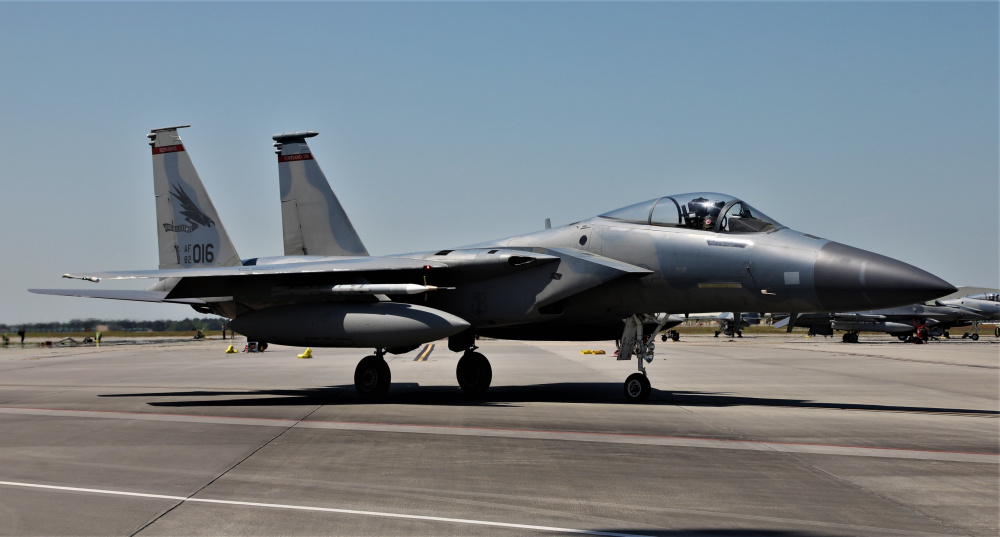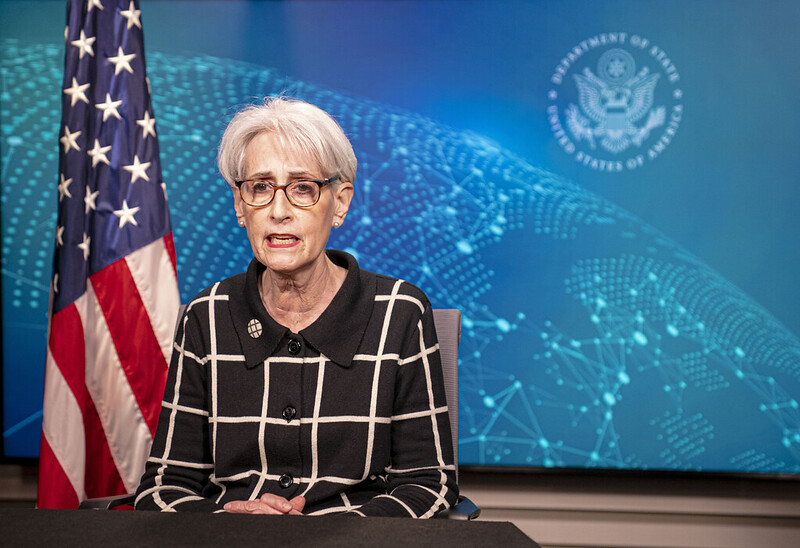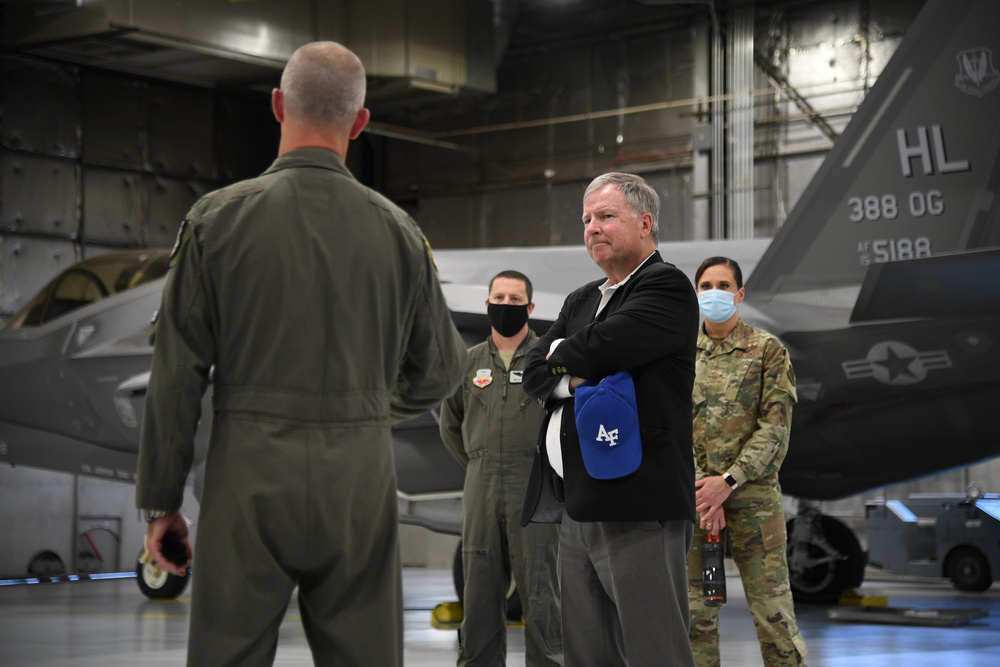Billions of dollars are on the line if Congress cannot pass a defense appropriations bill in the coming month and instead decides to fund the Defense Department through a continuing resolution for the rest of fiscal 2022, service chiefs and top Pentagon officials warned a House panel Jan. 12.
A yearlong CR also would cost the military an even more precious resource—its efforts to modernize and counter China and Russia, Air Force Chief of Staff Gen. Charles Q. Brown Jr. told the House Appropriations defense subcommittee.
“As much as this affects the Air Force fiscally, the impact it has on our way to change is more shattering,” Brown said. “Time is irrecoverable. And when you’re working to keep pace against well resourced and focused competitors, time matters.”
Brown said some of the Air Force’s signature modernization efforts would face delays of a year or more under a long-term CR, starting with two areas where Russia and China have built up their own capabilities as of late: the nuclear triad and hypersonics.
Air Force Concerns
Under a continuing resolution, the Air Force is unable to start more than a dozen new programs and ramp up production in several others. All told, Brown said, the Air Force would lose around $3.5 billion in purchasing power if the CR is extended through the end of fiscal 2022.
In keeping with his focus on the importance of time, though, Brown spent much of his testimony highlighting the delays a long-term CR would have on modernization.
“A yearlong CR could irreversibly delay the Ground Based Strategic Deterrent initial operating capability past 2029, the Long Range Standoff Weapon by over a year, and the conventional initial operating capability and nuclear certification of the B-21 up to a year,” Brown said.
“Additionally, the advancement of our two conventional hypersonic weapons could be prevented,” Brown added. “I’d like to point out that our pacing challenges have either modernized their nuclear enterprise and/or are fielding hypersonic systems. Meanwhile, we are still in the beginning phases of both.”
The GBSD program is already facing pressure from some corners of Congress, and the Air Force’s Air-launched Rapid Response Weapon hypersonic missile has taken some criticism after multiple test failures. Further delays to the programs could have a “compounding impact,” Brown added, “when you think about what our adversaries are doing and how they’re pacing out.”
But it’s not just nuclear and hypersonic weapon programs that could face issues under a CR. The development of the Next-Generation Air Dominance program, the Air Force’s planned sixth-generation fighter, would be delayed “by about two years,” Brown added, if the CR is extended. Improvements in the F-35 program also would be delayed a year, he said.
Space Force Concerns
Like Brown, Chief of Space Operations Gen. John W. “Jay” Raymond cited China and Russia as key reasons why Congress needs to pass an appropriations bill quickly, saying the Space Force needs funds to strengthen the military’s space capabilities, funds that aren’t available under a CR.
“Our adversaries are accelerating. This is not the time to be slowing the development and fielding of modernized capabilities for our forces,” Raymond told lawmakers.
“We remain the best in the world of space. We’ve got incredibly exquisite capabilities, but they were built for a different domain. They were built for a benign domain without a threat,” Raymond added. “The domain that we see today is threatened from a full spectrum of threats, everything from reversible jamming to kinetic destruction, as demonstrated by Russia. We have to modernize, we have to make that shift, and we are losing time. That’s why not having a CR is so critical to us. We have to move out to modernize a more resilient, defendable architecture that can meet the demands of a contested domain.”
The impact of a long-term CR would be bad for all the services, Raymond acknowledged. But he argued it would be especially painful for the Space Force, as the young service enters its third year of existence and works to establish itself.
Most obviously, the Department of the Air Force has said that under a CR, the Space Force won’t have the funds to complete the transfer of satellite communications capabilities from the Army, Navy, and Air Force.
Raymond said a yearlong CR would cut the Space Force’s budget by $2 billion, a substantial chunk of the tiny service’s funding.
“We view our ability to provide space capabilities and the advantage that they provide to our joint forces a sacred duty, and you can’t take that for granted anymore,” Raymond said. “The continuing resolution is going to impact our ability to modernize our forces, to be there in the face of a growing threat and reduce our readiness, and [it] will hinder long-term impacts to our Guardians and their families.”
The potential impact on personnel is especially crucial. The 2022 National Defense Authorization Act, passed in mid-December, included a 2.7 percent pay raise for troops. However, if there is no accompanying appropriations bill, the funding for that pay raise will have to come out of other personnel-related accounts, officials said. One of the most likely ways the services will look to do that is by limiting the number of new service members who access.
For the Space Force, in particular, this would be especially harmful, Raymond said.
“One of the biggest benefits that we’ve realized after establishing the Space Forces is our ability to attract incredible talent. This talent is highly technical, it’s highly educated, and it’s sought after. And they have other options,” Raymond said. “And if we enter into this delay, we’d have to do reduced accessions and put hiring freezes in place to help pay for the much-needed and deserved pay raise. [And if we do that,] they’re going to other places, and those are people that we will not be able to get back.”
Other service chiefs mentioned potentially limiting permanent change-of-station moves for service members as another way to fund the pay raise. And if even that isn’t enough, Pentagon Comptroller Mike McCord warned, things such as bonuses could be sacrificed next.
Ways to Adapt?
This is far from the first time the Pentagon has had to operate under a continuing resolution. Indeed, the department has started the fiscal year under a CR 12 times in the past 13 years.
The fear of a long-term CR, however, is rising among certain officials and lawmakers. The most recent CR is set to expire after Feb. 18, but there has been speculation that some Republican lawmakers will push to extend the continuing resolution through the end of the fiscal year, preferring the spending levels set under former President Donald J. Trump to the budget proposed by President Joe Biden and Democrats.
On Jan. 12, however, such a possibility was criticized on all sides while Republican and Democratic representatives laid the blame for the stalled appropriations process on each other.
The difference between the Pentagon’s fiscal 2021 budget, established under Trump, and what was requested for 2022 under Biden is roughly $8 billion, McCord noted in his written testimony to the committee. But the true impact of a year-long CR would be much greater than that, he claimed.
“We would estimate that the lost purchasing power is more on the order of triple the $8 billion account level only,” McCord told lawmakers.
There are several reasons for that, he said, pointing to differences in military construction and the collapse of the Afghan national security forces that were initially slated to receive billions of dollars in aid.
“It is very difficult to get a precise number because you have to go down to a program level all across the department, but at the more general level, about triple the $8 billion,” McCord said.
That kind of loss is significant, McCord added. While a recent Government Accountability Office report found that DOD has adopted practices to manage the constraints of a continuing resolution, there is only so much the department can do.
“We have a lot of experience, sadly, now with CRs. So we certainly have some lessons learned,” McCord said. “But in general, there’s no strategy to combat math, right? If you don’t have enough money, you can’t operate the way you need to. You can’t pay the troops more … with the same amount of money and not have an impact come out some other way. So, yes, we have adapted on the contracting side, and we’re thinking about prioritization, … but again, this is fundamentally a math problem.”
